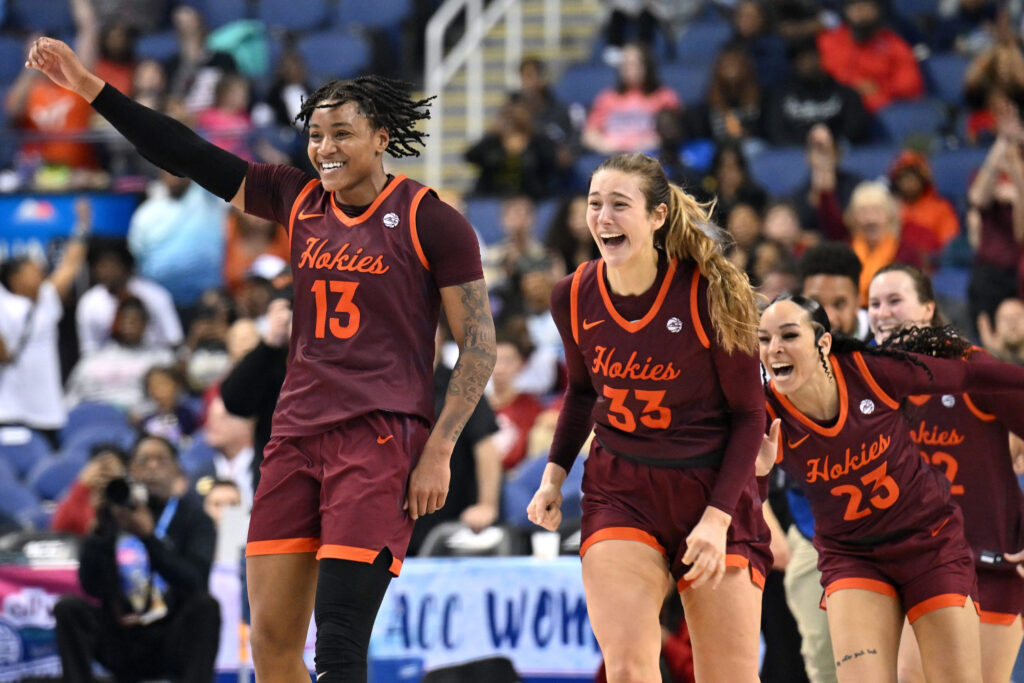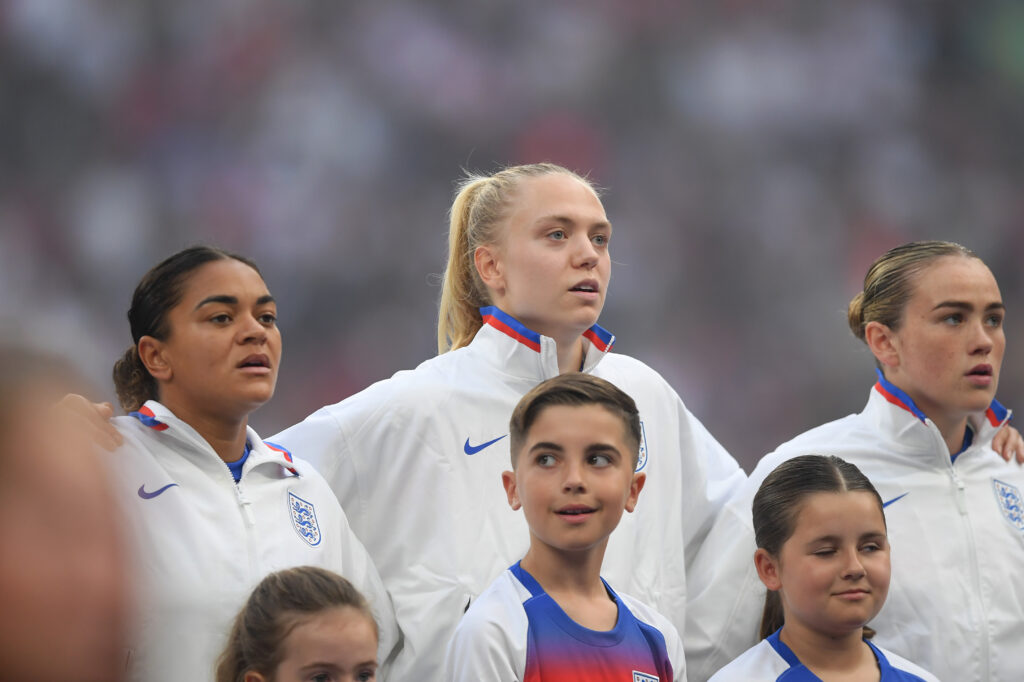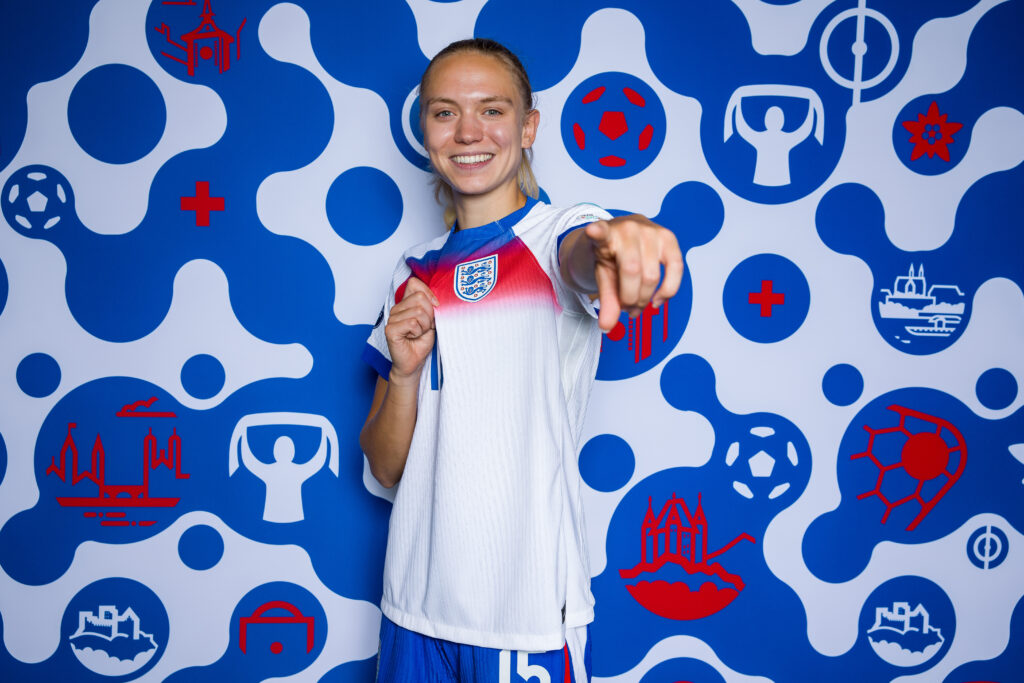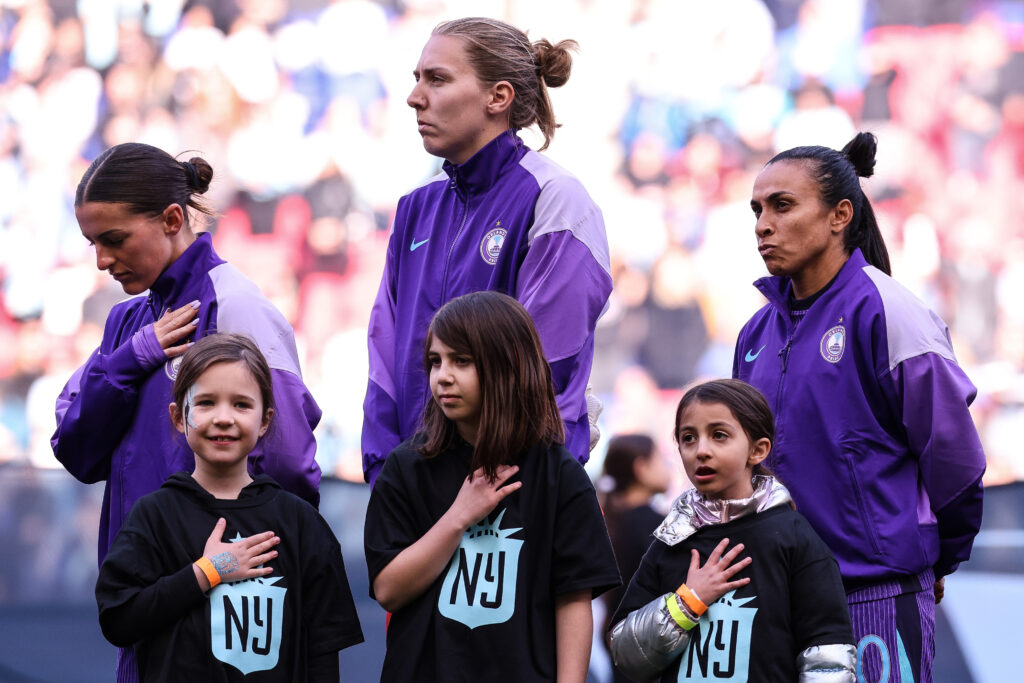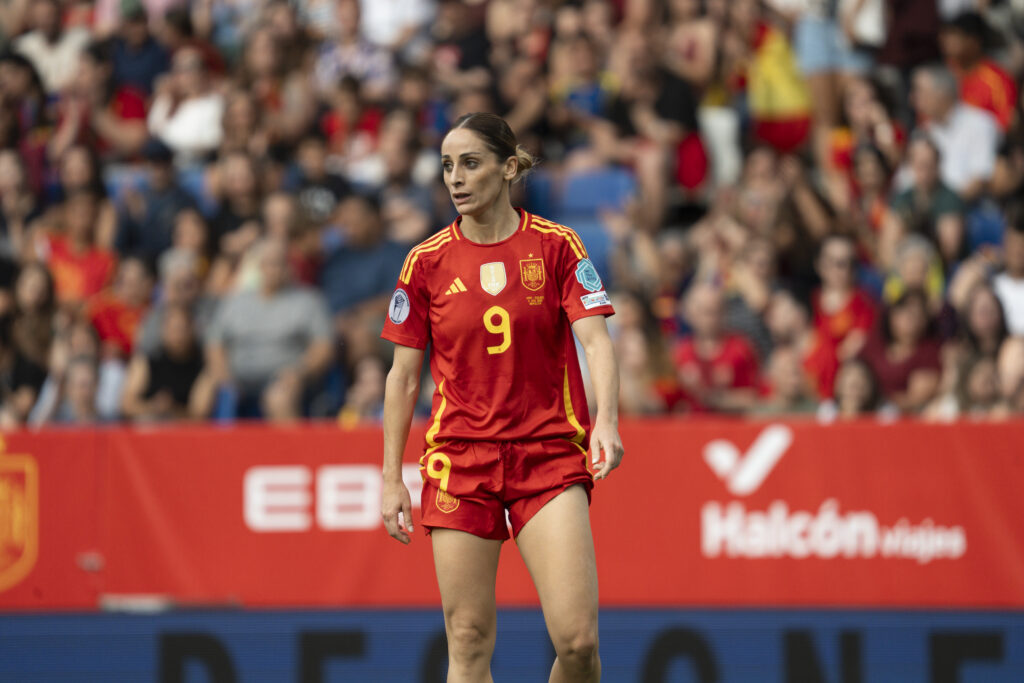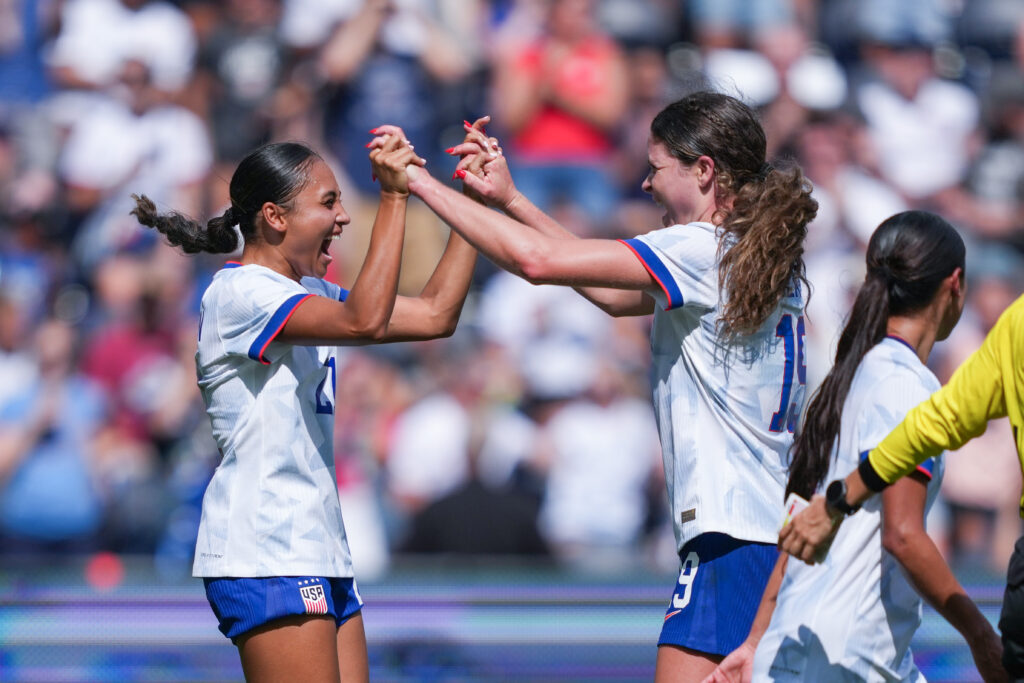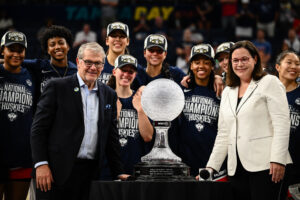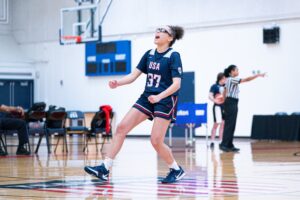March Madness is creeping up on us, and every team is fighting to earn its spot in the field. The Selection Show takes place at 8 p.m. ET Sunday. In the meantime, contenders are battling it out in conference tournaments for automatic bids and resume-building wins.
Here’s what I think the 2023 NCAA Tournament bracket should look like if the season ended today.
No. 1 seeds
South Carolina, Indiana, Stanford, Virginia Tech
Undefeated SEC champion and reigning national title winner South Carolina is the de facto overall No. 1 seed.
Next comes Indiana, which — despite losing to Iowa and being on the wrong end of a 24-point comeback by Ohio State — has been consistent all season in a Big Ten conference that challenges teams at every turn. The Hoosiers have done enough to keep a 1-seed. While an argument can be made for Iowa, which took home the Big Ten tournament title, overall body of work gives the edge to Indiana. The Hawkeyes have been on a tear lately, but they have more questionable losses on the season than Indiana (Kansas State, in particular).
Stanford will be the third No. 1 seed despite a few slip-ups this season. The Cardinal’s loss to UCLA in the Pac-12 tournament hurts, but not enough to bump them off the top line. Stanford has a No. 4 NET ranking and solid wins in and out of conference.
Competition for the final No. 1 seed is fierce. Iowa, Utah, Maryland and UConn were all in contention, but Virginia Tech played itself into the top of the bracket thanks to an ACC tournament title and an impressive record against top-ranked opponents.

No. 2 seeds
UConn, Iowa, Utah, Maryland
Iowa just misses out on a 1-seed, but their Big Ten tournament win makes the Hawkeyes the best of the No. 2s. Meanwhile, Maryland’s overall resume is solid enough to keep a 2-seed despite the Terrapins getting blown out by Iowa in the same tournament. Maryland has some of the best non-conference wins out of this bunch, topping both UConn and Notre Dame (when the Irish were at full strength). That and regular-season success in one of the country’s top conferences helps Maryland’s case.
Utah played itself out of a 1-seed by losing to Washington State in the Pac-12 tournament, but the Utes have done enough during the regular season to stop themselves from dropping even further. Other than that Washington State loss, the Utes lost only to ranked teams while beating stellar conference opponents, including Stanford, Colorado and UCLA.
UConn gets the final 2-seed thanks to strength of schedule. LSU’s loss to Tennessee in the SEC tournament allows the Huskies to keep their spot.
No. 3 seeds
Duke, Notre Dame, LSU, Texas
Two ACC teams find themselves on the 3-seed list, a testament to the conference’s strength. Duke would have been a No. 2 prior to their loss to Virginia Tech on Feb. 16 and close call against Virginia in their next game. They didn’t help their case in the conference tournament, either.
Notre Dame has been struggling without Dara Mabrey and Olivia Miles, and their lopsided loss to Louisville in the ACC tournament is proof of that. Still, overall body of work has to be considered when it comes to seeding. The Irish have great wins over teams such as UConn and Virginia Tech, plus a high NET ranking (8). They may struggle in March Madness without two of their starters, but that has nothing to do with seeding.
Texas is the surprise team on this list, but the Longhorns have crept back into favor in the past month. After a rocky start to the season, during which the Longhorns lost four of their first seven games and fell out of the AP poll, they’ve turned things around. They picked up a statement win over Oklahoma on Jan. 25 and are currently 11th in the NET rankings.
If the Tigers had a better resume heading into the conference tournament, they might have been able to hang onto a higher seed. But with no standout wins on their non-conference slate, LSU has to fall back on their two-loss record, which should give UConn an edge in the fight for a 2-seed. LSU’s consistency despite its weak schedule barely allows them to hang onto a 3-seed.

No. 4 seeds
Ohio State, UCLA, Oklahoma, Villanova
Ohio State is the surprise of this group. The Buckeyes started the season looking unbeatable, with an 18-0 record to match, but then as injuries to Madison Greene (out for the season), Jacy Sheldon and Rebeka Mikulasikova plagued the squad, they dropped seven of their last 13 games. But the Buckeyes have some fight left, and they proved it with a monumental win over Indiana in the Big Ten tournament. A 4-seed may seem a bit high, but no one in the 5 and 6 groups has done anything to show they are more worthy than the Buckeyes, who just executed a 24-point comeback over a team projected to be a No. 1 seed.
UCLA was sitting behind both Arizona and Colorado in seeding before it topped Stanford in the Pac-12 tournament, while the Buffs and the Wildcats went down early. The Bruins had a difficult January, dropping games to Arizona, Utah and Colorado, but then bounced back with four wins in a row. Add in the win over the conference’s top team, and UCLA has the resume for a 4-seed.
No. 5 seeds
Michigan, Arizona, Colorado, Louisville
The chaos of the Pac-12 tournament affected Arizona and Colorado in a big way. One win by each team and they might be hosting the first round. Instead, these squads find themselves on the 5-line. The Buffs in particular miss out, as they have been nearly unstoppable at home this season.
Michigan also didn’t help itself in the Big Ten tournament, nor in the games leading up to it. A loss to Ohio State looks better now that the Buckeyes beat Indiana, but Michigan’s resume is no better than any of the 4-seeds and no worse than the 6s.
Louisville’s appearance in the ACC championship game moves the Cardinals from a 6- to a 5-seed.

No. 6 seeds
Florida State, North Carolina, Iowa State, Tennessee
The six-seeds are all teams that have gone through struggles and surprises this season. Florida State worked itself into the conversation when they beat North Carolina back in December, and since then, wins over NC State and Duke have only helped their case.
Tennessee struggled mightily out of the gate but settled into a good place as the season progressed. North Carolina has wins worthy of a higher seeding, but their inconsistency — the Tar Heels are 21-10 — keeps them from moving up.
Iowa State has stayed under the radar since Stephanie Soares tore her ACL and took the Cyclones out of national title conversations. Still, they’ve had a solid season, and as the Big 12 tournament begins, they can make a case to move up. For now, a 6-seed is a good spot for this team, which gets a boost by being 12th in the NET.
No. 7 seeds
Gonzaga, NC State, Creighton, Washington State
Of the 7-seeds, Gonzaga is the strongest. The likely WCC champions are 28-3, with quality wins over Tennessee and Louisville. They’ve also taken care of business in conference with just one loss.
NC State earns this position thanks to wins over Iowa and Notre Dame despite struggling overall in the ACC (8-8). The big upsets and a No. 18 ranking in the NET help the Wolfpack’s case.
Washington State is the surprise of this group. Before the Pac-12 tournament, the Cougars were among the last eight or so teams to earn a bid. Now, they not only have secured an automatic bid, they have played themselves up from a 10- or 11-seed and onto the 7-line. Topping Utah, Colorado and UCLA is no easy feat, but the Cougars pulled it off.
Creighton finished third in the Big East behind UConn and Villanova, with a victory over the latter helping the Blue Jays’ resume. They went on to lose a close game to the Wildcats in their conference tournament, but that doesn’t negatively impact the team overall.

No. 8 seeds
Illinois, Baylor, USC, South Florida
Illinois, Baylor and USC are all in the same boat. They’ve had amazing wins as well as head-scratching losses. But each team has enough quality victories to fall into the 8-seed category.
South Florida should lock up a No. 8 seed by winning the AAC but could fall if an upset occurs.
No. 9 seeds
Kansas, Miami, Marquette, Ole Miss
I know teams don’t earn their seeds based on games they almost won, but Ole Miss’ near upset of South Carolina in the regular season is indicative of how good the Rebels can be. They’ve held their own in the SEC with a 9-5 record and have wins over other potential tournament teams in Georgia and Arkansas.
Kansas and Marquette both spent time in the AP Top 25 this season but find themselves unranked at the moment. Miami is in the top half of a stacked ACC, having beaten North Carolina, Virginia Tech and Florida State, which makes them one of the stronger 9-seeds.
No. 10 seeds
Columbia, Purdue, Middle Tennessee, Alabama
Middle Tennessee is well-respected by AP voters, having been ranked in the Top 25 for the last few weeks. While the Blue Raiders play in Conference USA, which doesn’t earn them any points, they did beat Louisville in December and have been consistent since then.
Another notable 10-seed is Columbia, a potential sleeper in the NCAA Tournament. Led by sharpshooter Abbey Hsu and her 18.2 points per game, the Lions are 24-1 and atop the Ivy League standings.

No. 11 seeds
Florida Gulf Coast, St. John’s, Nebraska, Syracuse, Princeton
St. John’s played itself into the tournament by upsetting UConn late in the regular season, and Syracuse, Princeton and Nebraska are all on the bubble.
No. 12 seeds
UNLV, Oklahoma State, St. Louis, South Dakota State, Mississippi State
UNLV is another team that I would hate to match up with in the first round. The Runnin’ Rebels don’t get much love nationally while playing in the Mountain West, but that’s where the eye test comes in. UNLV has Power 5 talent, and if you watch them even once, it’s easy to see why they are a scary opponent.
St. Louis secured an automatic bid with a cinematic win over UMass in its conference final.
No. 13 seeds
Illinois State, Toledo, Green Bay, Long Beach State
Illinois State is fighting with Belmont for an automatic bid in the Missouri Valley, while Toledo is battling it out with Ball State in the Mid-American.
No. 14 seeds
James Madison, Iona, Boston, Drexel
The Boston Terriers are firmly in first place in the Patriot League and are the favorite to win the conference tournament. They went 17-1 in conference play this season.
No. 15 seeds
Albany, Fairleigh Dickinson, Montana State, Gardner-Webb
In the 15-seed group, Montana State stands out as a team with multiple wins over high-level opponents. The Bobcats defeated BYU and South Dakota State early in the season.
No. 16 seeds
Chattanooga / Norfolk State, Jackson State / SE Louisiana, Southern Utah, Tennessee State
All eyes will be on Jackson State this postseason after the Tigers nearly topped LSU in the first round of the 2022 tournament.
Eden Laase is a Staff Writer at Just Women’s Sports. Follow her on Twitter @eden_laase.
